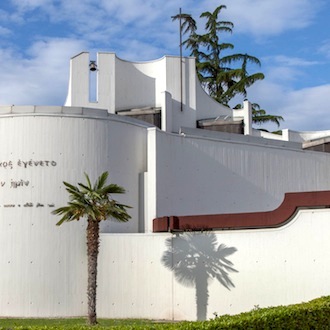
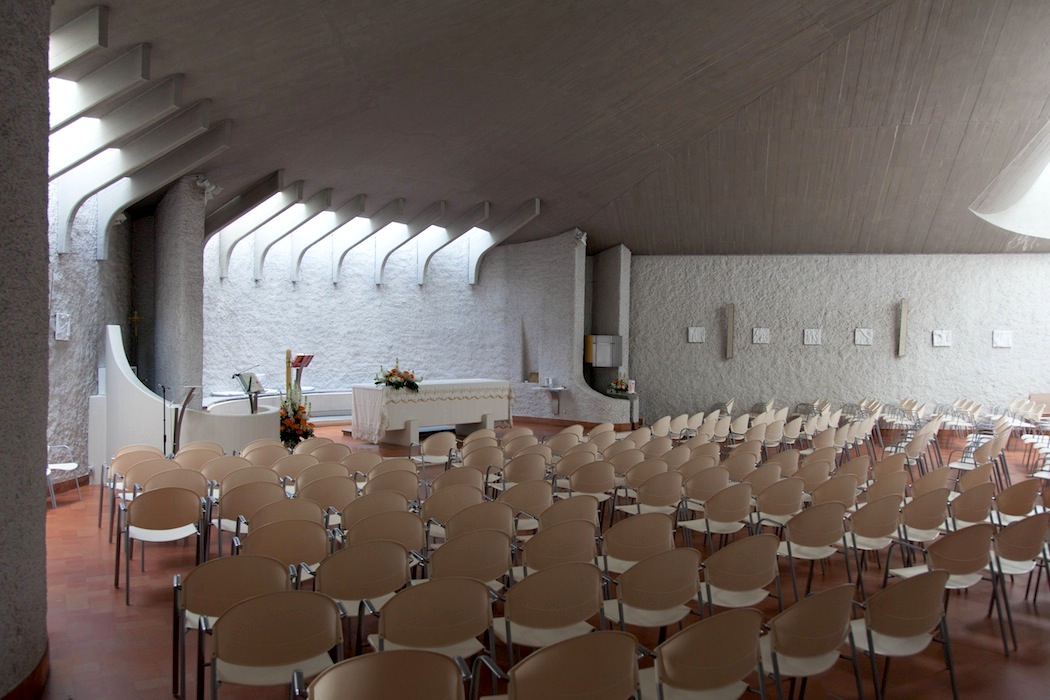
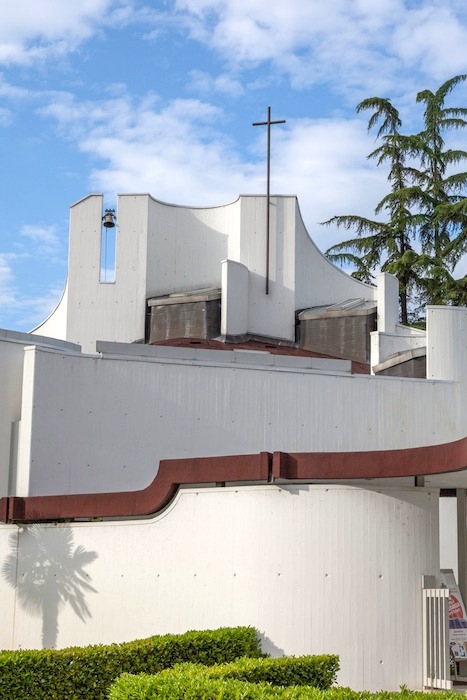
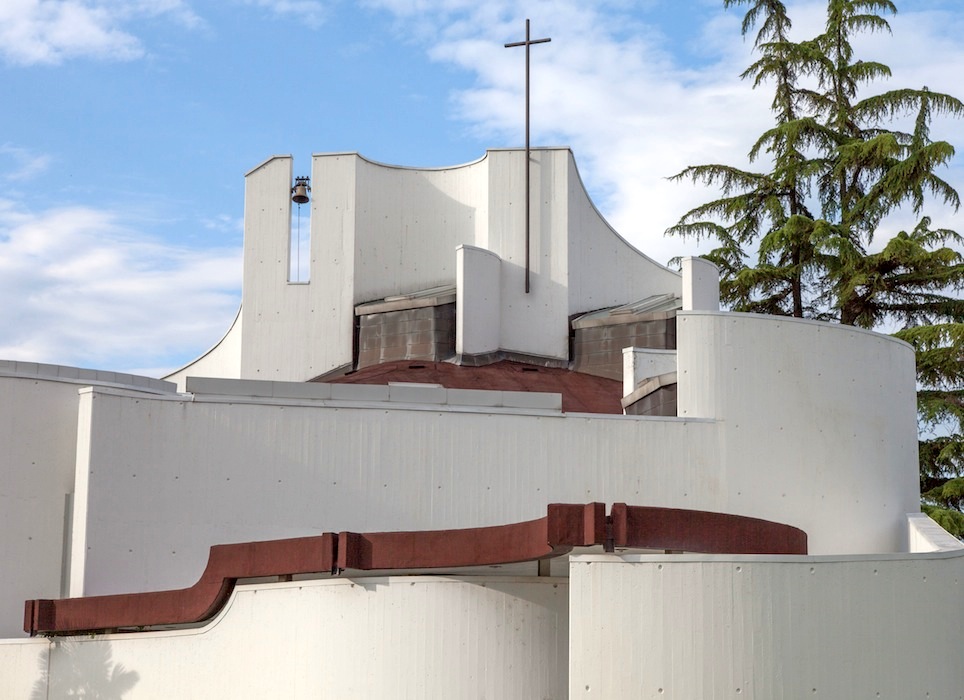
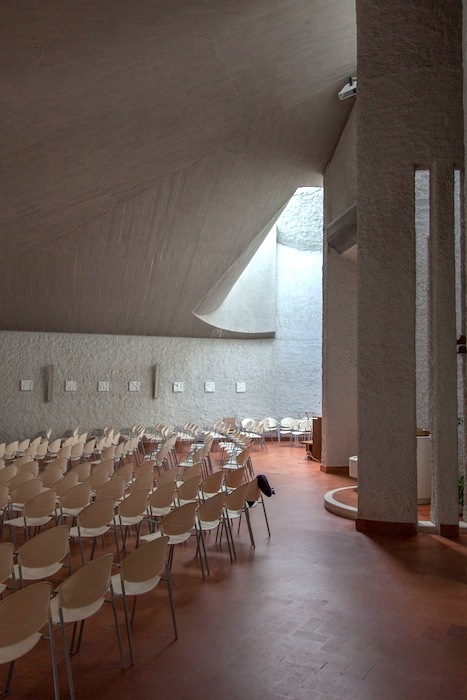
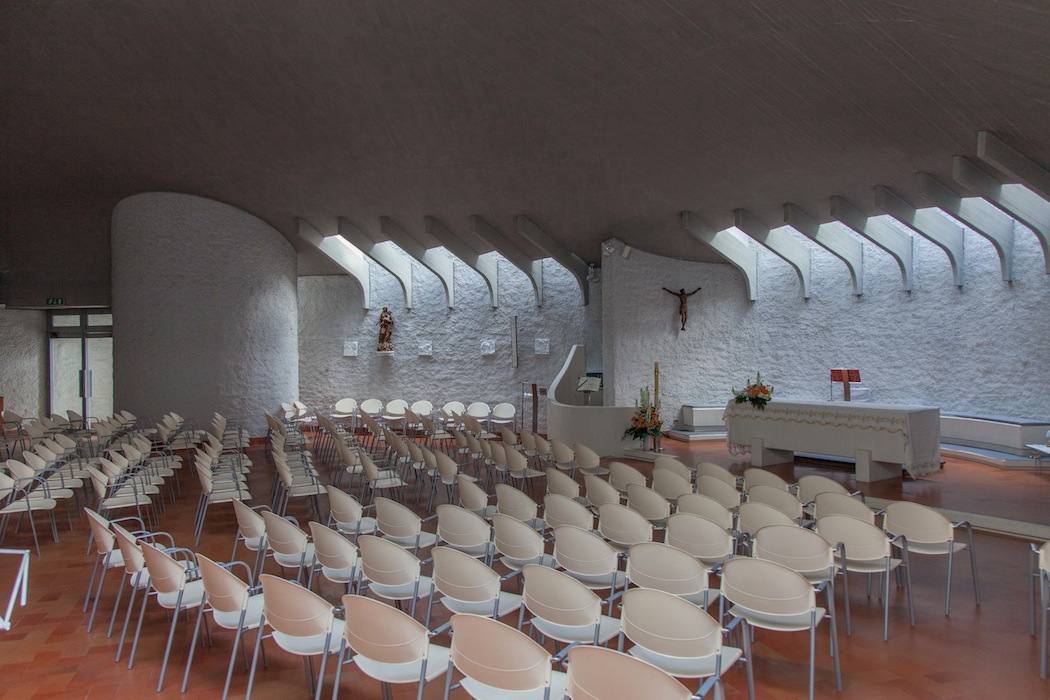
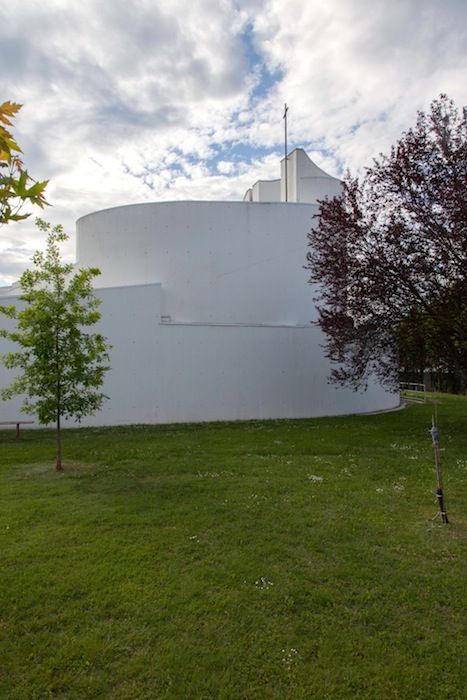
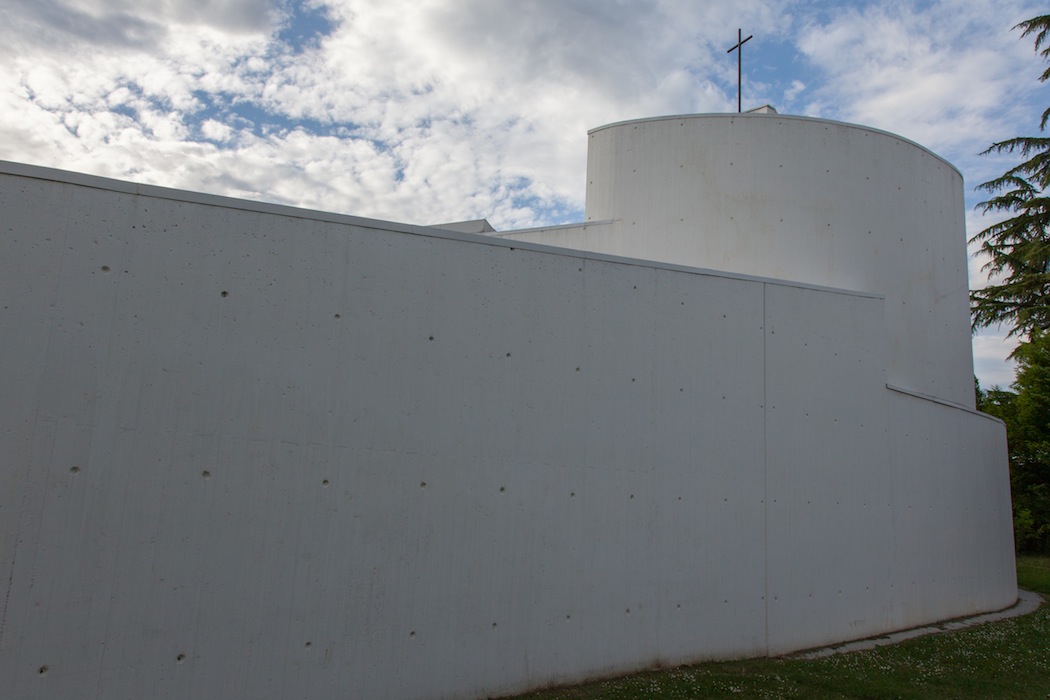
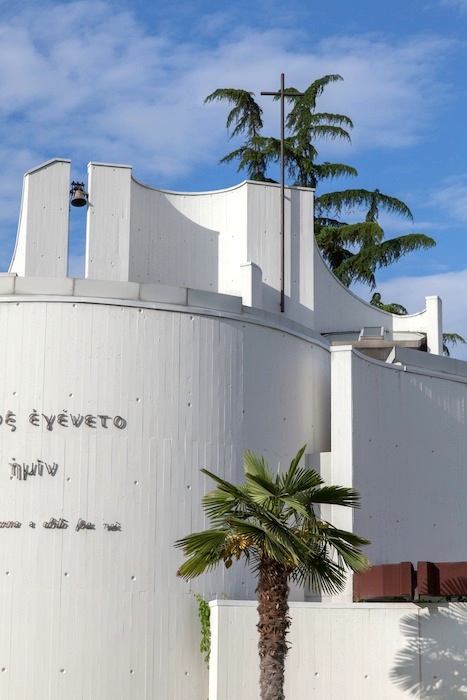
San Cassiano Church
Alba (CN), Italy
Type: New construction
Area: 200 sqm
Completion: 1975
Architects: Ugo Dellapiana, Beatrice Tessore, Sebastiano Rao
Images: Archicura
The building is a symbol of the early reforms originating from the Second Vatican Council. The two paths that lead to the entrance at the side of the sanctuary separate the numerous and different ways of accessing the church. These are then channelled at the back of the room. The map of the church is therefore completely turned upside down, thus hinting at the Holy Spirit’s indifference towards worldly matters in favour of the path drawn by faith. This leads us towards the Altar which is located under the light coming from the overhead, which in the church spreads everywhere from above.
The roof is a big tent hanging between the bent walls that define the outline of the building, and pierced by the four glass openings that correspond to the two confessionals, the central Baptistery and the “schola cantorum”, beyond the big opening on the Apse.
Curved lines draw the profiles of the walls and convey towards the presbytery. They outline the various spaces within the church: two confessionals, the arch in the sacristy, in the apse, in the baptistery and the two side entrances connected to two external spaces that “prepare believers to enter the church”. The building wraps believers, thus telling about God’s word, with a kind of charm that gathers Christians and leads them to walk the Path of Truth and Holy Life.
A nearby building hosts the church’s works and administrative activities, with a meeting room and accommodation for priests. The façade that looks towards the side of the church traces its profile with flexibility and total adherence.
Soon, the mechanical pipe organ in wood and tin belonging to the “schola Cantorum” will be placed in the apse as a gathering spot for the community of believers. Charmed by the word of the Gospel, Christians will come together to share their faith, accompanied by the music that will express men’s gratitude towards God’s generosity in bestowing Grace upon believers, seen as loved creatures.
The light that comes from above, the wrapping walls that lean towards the altar, together with the different liturgical symbols found in the church (such as the baptistery, confessionals, altar and apse), persuade believers to become a part of the community and share their faith and prayers.

